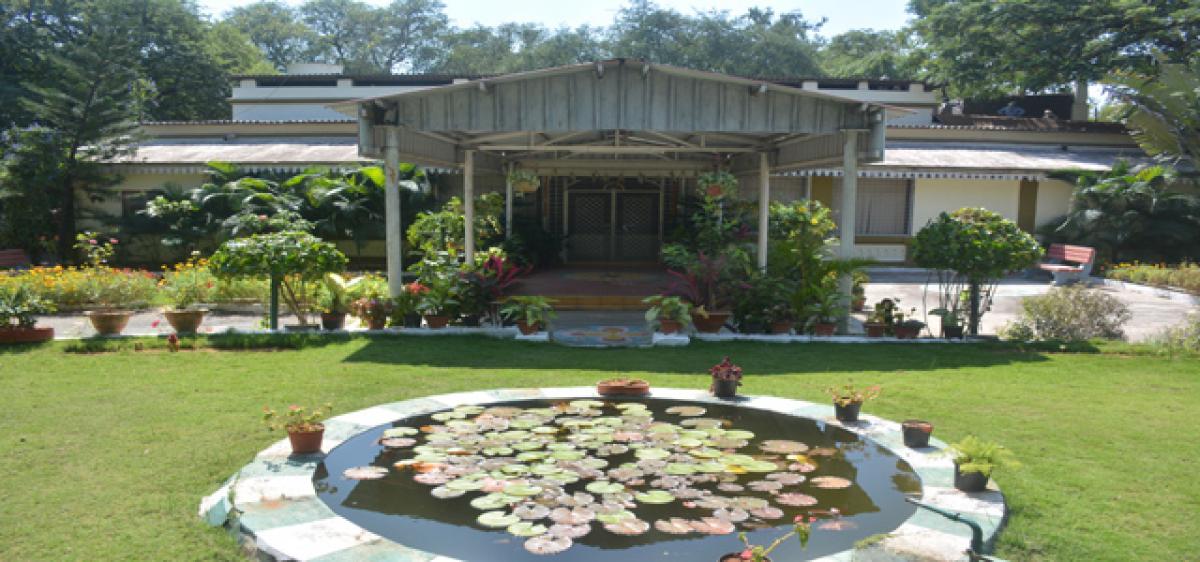Live
- Japan to strengthen measures against illegal part-time jobs
- Gahlot resignation: Delhi Congress calls AAP a sinking ship
- Consultative body on doctors' walkout fails to narrow differences in South Korea
- Honouring bravehearts: Army commemorates Nuranang Day
- 40,000 aspirants participate in army recruitment rallies across Jammu division
- Nigerian President Tinubu lauds PM Modi's efforts to amplify concerns of Global South
- Congress in Himachal to hold event in Bilaspur to mark two years at helm
- Hitaashee takes third title of the season, wins 14th leg of WPGT
- Group-3 exams in Wanaparthy district peacefully*
- Shraddha Das reigns as a fashion icon
Just In

Hidden behind eight to ten feet walls, one hardly gets to notice these bungalows. Constructed in typical British colonial style with high wooden ceilings and simple lines, these architectural beauties have endured the test of time for over a century.
Hidden behind eight to ten feet walls, one hardly gets to notice these bungalows. Constructed in typical British colonial style with high wooden ceilings and simple lines, these architectural beauties have endured the test of time for over a century.
Spacious verandahs, immaculately maintained lawns, servants’ quarters and flower bordered long driveways leading to a car shed all within the campus make these bungalows stand out. The most striking part of the bungalows are the gardens which are a riot of colour all through the year as gardeners make sure to keep planting flower bearing plants.
Furnished in earthy tones of brown and cream, verandahs overlooking a fountain in the garden and a fireplace in the hall room transport one back to the days of Yore. It was never as cold as it was in Britain to have a fire place but then, Briton officers posted in Secunderabad wanted to bring in the English element in every little manner that they could. The size and facilities of the bungalows depended on the position of officers then and it remains so even today.
A central room off which other enclosures opened was typical of Anglo Indian bungalows. Trudy McDonald, an employee of Telangana State Road Transport Corporation recollects, “Every time I pass through bungalow No 364, which is just behind the church in South Lalaguda, I am transported to a different world of quiet. It was here that one Mr Meyers lived and we would often play with his children in the garden.”
Nothing much has changed over the years, as the South Central Railway (SCR), which is the present custodian of the bungalows, makes sure that a legacy passed on to them is kept alive. M Umashankar, Chief Public Relations Officer, SCR says, “Parliamentary form of government, the civil service and railways British’s legacy to the country and these bungalow remind us ever so often of the past. They are the last link to an era of which the present generation is not aware.”
Like the past, even today there is an entourage of servants to maintain the lawn and run errands notwithstanding the hue and cry every now and then to abolish bungalow peons, a British legacy. If not for the dak khalasi or bungalow peons, the bungalows would have disappeared as they are built in sprawling campuses. For instance, bungalow No 22 in South Lalaguda has 17 rooms and five bathrooms.
When quizzed if a bungalow bearing a number 30 would comprise as many rooms, Santosh, estate manager, SCR guarded in his reply shares, “It is only a coincidence and not all bungalows have so many rooms.”
A heavy scent of days gone by hangs thick in the cavernous rooms and the high ceilings and teak wood remind one of an era when time stood still.

© 2024 Hyderabad Media House Limited/The Hans India. All rights reserved. Powered by hocalwire.com







